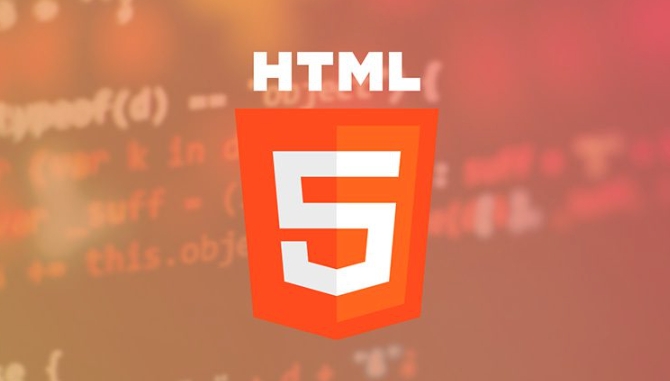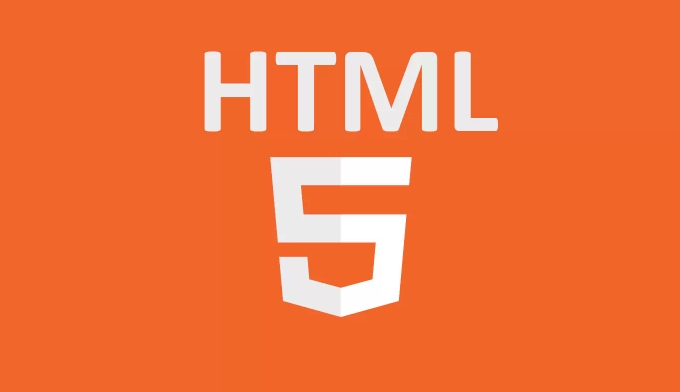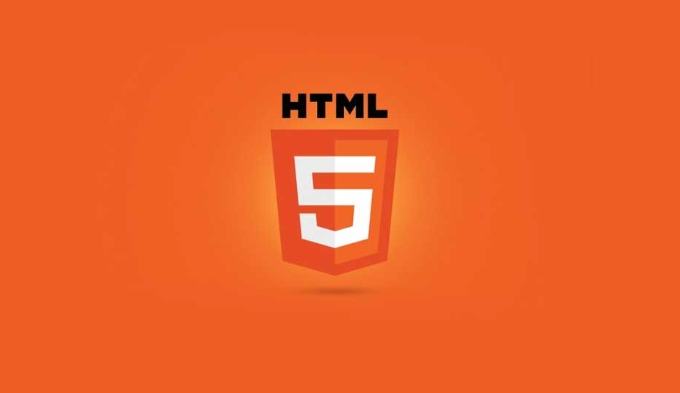Customizing controls for native HTML5 media players.
Jul 02, 2025 pm 04:43 PMTo customize HTML5 media player controls, 1. First remove the native controls, remove the controls attribute or set to false; 2. Create custom UI elements such as buttons and progress bars, and use JavaScript to bind events to achieve playback/pause function; 3. Use the timeupdate event to update the playback progress and allow the user to drag and jump; 4. Use the requestFullscreen method to achieve full screen switching; 5. Full control of the style through CSS and adapt to responsive layout.

If you are trying to customize the controls of HTML5 native media players, you may have noticed that the default controls are easy to use, but their styles and functions often do not meet the needs of the project. The good news is that HTML5 provides enough API and event support to allow you to build your own control bars and even replace native controls entirely.

Hide native controls and take over control
The first step is usually to hide native controls so that you can freely add your own UI elements. Just remove the controls attribute in <video></video> or <audio></audio> tag, or set to false:

<video id="myPlayer" src="video.mp4"></video>
After that, you need to create elements such as buttons, progress bars, volume sliders, etc. yourself, and control player behavior through JavaScript binding events. For example, add a "Play/Pause" button, where you can listen to click events and switch playback status:
- Get video element:
const player = document.getElementById('myPlayer'); - Add click event:
playButton.addEventListener('click', () => { if (player.paused) player.play(); else player.pause(); })
Once this step is complete, the player looks completely under your control.

Basic logic for implementing common controls
To implement a complete set of control bars, there are several core controls that need to be processed:
- Play/Pause button : Toggle icons or text according to the current playback status.
- Play progress bar : The current playback time is displayed when updated, click drag to change the playback position.
- Volume Control : Provides slider to adjust volume properties.
- Full screen switching : Use
requestFullscreen()method to enter full screen mode (note browser compatibility).
Taking the progress bar as an example, you can update the current time display and the location of the progress bar by listening to timeupdate event:
player.addEventListener('timeupdate', () => {
progressBar.value = (player.currentTime / player.duration) * 100;
});At the same time, the progress bar should be interactive and allows the user to jump to a specific time point:
progressBar.addEventListener('input', () => {
player.currentTime = (progressBar.value / 100) * player.duration;
});Although this part of the logic is not complicated, you should pay attention to details, such as avoiding zero-deletion errors, formatting time display, etc.
Handle styles and responsive layouts
Once the controls are in place, the next step is to make it look like a real player. You can completely customize the control styles through CSS, including colors, rounded corners, hover effects, and more. It is recommended to wrap the control in a container and position it above or below the video screen:
<div class="custom-controls"> <button id="play">Play</button> <input type="range" id="progress" min="0" max="100" value="0"> </div>
Then use CSS to style .custom-controls to match the video proportions, and even automatically hide some controls on the small screen to keep them simple.
What is easy to ignore here is the availability issues under different devices. For example, on mobile devices, some controls may require a larger click area, which will otherwise be difficult for users to operate.
Basically that's it. As long as you master the basic DOM operations and event binding, you can create an HTML5 media player with a unified appearance and controllable functions.
The above is the detailed content of Customizing controls for native HTML5 media players.. For more information, please follow other related articles on the PHP Chinese website!

Hot AI Tools

Undress AI Tool
Undress images for free

Undresser.AI Undress
AI-powered app for creating realistic nude photos

AI Clothes Remover
Online AI tool for removing clothes from photos.

Clothoff.io
AI clothes remover

Video Face Swap
Swap faces in any video effortlessly with our completely free AI face swap tool!

Hot Article

Hot Tools

Notepad++7.3.1
Easy-to-use and free code editor

SublimeText3 Chinese version
Chinese version, very easy to use

Zend Studio 13.0.1
Powerful PHP integrated development environment

Dreamweaver CS6
Visual web development tools

SublimeText3 Mac version
God-level code editing software (SublimeText3)

Hot Topics
 What Does H5 Refer To? Exploring the Context
Apr 12, 2025 am 12:03 AM
What Does H5 Refer To? Exploring the Context
Apr 12, 2025 am 12:03 AM
H5referstoHTML5,apivotaltechnologyinwebdevelopment.1)HTML5introducesnewelementsandAPIsforrich,dynamicwebapplications.2)Itsupportsmultimediawithoutplugins,enhancinguserexperienceacrossdevices.3)SemanticelementsimprovecontentstructureandSEO.4)H5'srespo
 Is H5 a Shorthand for HTML5? Exploring the Details
Apr 14, 2025 am 12:05 AM
Is H5 a Shorthand for HTML5? Exploring the Details
Apr 14, 2025 am 12:05 AM
H5 is not just the abbreviation of HTML5, it represents a wider modern web development technology ecosystem: 1. H5 includes HTML5, CSS3, JavaScript and related APIs and technologies; 2. It provides a richer, interactive and smooth user experience, and can run seamlessly on multiple devices; 3. Using the H5 technology stack, you can create responsive web pages and complex interactive functions.
 H5 and HTML5: Commonly Used Terms in Web Development
Apr 13, 2025 am 12:01 AM
H5 and HTML5: Commonly Used Terms in Web Development
Apr 13, 2025 am 12:01 AM
H5 and HTML5 refer to the same thing, namely HTML5. HTML5 is the fifth version of HTML, bringing new features such as semantic tags, multimedia support, canvas and graphics, offline storage and local storage, improving the expressiveness and interactivity of web pages.
 Understanding H5 Code: The Fundamentals of HTML5
Apr 17, 2025 am 12:08 AM
Understanding H5 Code: The Fundamentals of HTML5
Apr 17, 2025 am 12:08 AM
HTML5 is a key technology for building modern web pages, providing many new elements and features. 1. HTML5 introduces semantic elements such as, , etc., which enhances web page structure and SEO. 2. Support multimedia elements and embed media without plug-ins. 3. Forms enhance new input types and verification properties, simplifying the verification process. 4. Offer offline and local storage functions to improve web page performance and user experience.
 HTML5: The Building Blocks of the Modern Web (H5)
Apr 21, 2025 am 12:05 AM
HTML5: The Building Blocks of the Modern Web (H5)
Apr 21, 2025 am 12:05 AM
HTML5 is the latest version of the Hypertext Markup Language, standardized by W3C. HTML5 introduces new semantic tags, multimedia support and form enhancements, improving web structure, user experience and SEO effects. HTML5 introduces new semantic tags, such as, ,, etc., to make the web page structure clearer and the SEO effect better. HTML5 supports multimedia elements and no third-party plug-ins are required, improving user experience and loading speed. HTML5 enhances form functions and introduces new input types such as, etc., which improves user experience and form verification efficiency.
 HTML5: The Standard and its Impact on Web Development
Apr 27, 2025 am 12:12 AM
HTML5: The Standard and its Impact on Web Development
Apr 27, 2025 am 12:12 AM
The core features of HTML5 include semantic tags, multimedia support, offline storage and local storage, and form enhancement. 1. Semantic tags such as, etc. to improve code readability and SEO effect. 2. Simplify multimedia embedding with labels. 3. Offline storage and local storage such as ApplicationCache and LocalStorage support network-free operation and data storage. 4. Form enhancement introduces new input types and verification properties to simplify processing and verification.
 HTML5 and H5: Understanding the Common Usage
Apr 22, 2025 am 12:01 AM
HTML5 and H5: Understanding the Common Usage
Apr 22, 2025 am 12:01 AM
There is no difference between HTML5 and H5, which is the abbreviation of HTML5. 1.HTML5 is the fifth version of HTML, which enhances the multimedia and interactive functions of web pages. 2.H5 is often used to refer to HTML5-based mobile web pages or applications, and is suitable for various mobile devices.
 The Connection Between H5 and HTML5: Similarities and Differences
Apr 24, 2025 am 12:01 AM
The Connection Between H5 and HTML5: Similarities and Differences
Apr 24, 2025 am 12:01 AM
H5 and HTML5 are different concepts: HTML5 is a version of HTML, containing new elements and APIs; H5 is a mobile application development framework based on HTML5. HTML5 parses and renders code through the browser, while H5 applications need to run containers and interact with native code through JavaScript.






